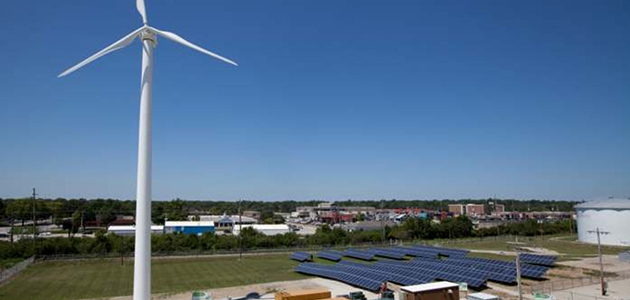Hybrid-Fueled Microgrids: The Future is Now
Back to Top
Propelled by the desire for more resilient and cost-effective smart energy systems, microgrids have quickly become one of the most popular topics of discussion in the energy sector. And it’s easy to see why. The need for secure and reliable power will only increase, and with onsite generation and load localization that can disconnect from the much larger grid in the event of an outage, businesses, campuses, and institutions alike will find microgrids to be a necessary and attractive option. But as the heightened awareness around microgrids increases, it’s important to ensure that those conversations are being centered around the smartest microgrid strategies of today—hybrid-fueled microgrids.
Today’s microgrids are a little bit different from microgrids of the past: they are more flexible, advanced, and compact, and they have multiple generation sources with multiple loads working together. And, new technology has allowed for lower-cost generation sources to be developed. We’ve seen a change over the last 10-15 years with the advancement of new generation technology, particularly in the form of renewable energy, including wind energy, solar energy, and bio mass. Technologies have developed and are commercialized and economical, competing against a traditional generation source.
In the past, microgrids looked a lot simpler and commonly used only one type of generation source. Typically, when people said, “I have a microgrid,” it was usually a back-up natural gas generator or diesel generator. The problem is, running off one fuel source is not resilient. What happens if there is an issue and you can’t get to your diesel fuel, or what happens if there is a rupture of the natural gas line? Unfortunately, you’d be out of luck because you’re linked to one fuel source or one generation asset. The way we produce and consume energy is transforming, and with the increase of weather-related outages, relying on a single source to stay connected to the grid in times of power interruption or emergency is no longer feasible.
How do we mitigate the risk? Naturally, we cannot control the weather-related outages from happening completely, but moving away from single-generation grids and moving toward hybrid-fueled microgrids powered by distributed generators, batteries, and renewable resources is a step in the right direction. Hybrid-fueled microgrids allow for increased benefits compared to single-fueled microgrids. Think about the cost of power. Microgrids do not just run in the time of back up, they run all throughout the year. Hybrid-fueled microgrids give the ability to maximize your lowest-cost generation source and, in turn, that allows for the installation of renewable energy, which leads to more variety. And more variety means more resiliency.
Consider this: What would happen if you had a backup generator and you could not get diesel fuel? Well, the sun is still going to come out, there is still going to be wind, and the battery can still be charged with excess power that you can use later during a time at night when the renewables are not as available.
Existing infrastructure can still be used. There is no need to get rid of your back-up generator because the microgrid can be added on as part of the system. Install the renewables that will run most of the time, and then you can still have a backup generator, which will be incorporated into your overall grid. Being able to use existing infrastructure will help lower your capital cost to get a microgrid.
As microgrid technological advances continue to expand and grow, so will the conversations and surrounding them. I’d like to hear your thoughts on this topic below.